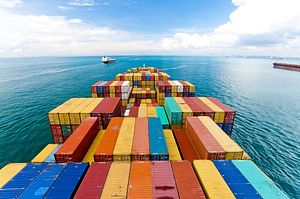On October 5, final agreement was reached on the free trade agreement, the Trans-Pacific Partnership (TPP), between the United States and 11 Pacific Rim countries (Australia, Brunei, Canada, Chile, Japan, Malaysia, Mexico, New Zealand, Peru, Singapore, and Vietnam). This is good news for the global economy. This massive trade deal spanning both sides of the Pacific Ocean comes after five years of intensive negotiations, accompanied with a great deal of skepticism, and not only among the parties involved in this pact.
The objective for the future seems to be the expansion of this pact to include additional countries throughout the Asia-Pacific region. In fact, not all the TPP countries have been part of the negotiations since they began in November 2011. Japan, the largest trading partner of the U.S. inside the trade pact, started participating only in 2013.
If approved by the U.S. Congress and successfully implemented, the TPP has the potential to lend new impetus to other and perhaps more significant agreements currently being negotiated. The other important trade pact is the Transatlantic Trade and Investment Partnership, which aims to create a unique market between the U.S. and the European Union, the world’s two largest economic regions accounting for half of global economic output. Negotiations for the TTIP started more than two years ago, being part of the development agenda for creating economic growth and jobs on both sides of the Atlantic by boosting trade and investment.
Perhaps more importantly, these two agreements could serve as templates for future World Trade Organization (WTO) negotiations, which seem to have stalled since the Doha round. Ultimately, all advanced and emerging economies have a common interest in advancing their economic prosperity through the multilateral trade liberalization. U.S. Trade Representative Michael Froman has repeatedly stated that, “a successfully implemented TPP will open markets, eliminate and reduce trade barriers, increase opportunities, set high standards trade rules and address 21st century issues in the global economy.”
According to International Monetary Fund data in 2015, the TPP economy represents 27.35 percent of the world’s purchasing power parity, measured through its GDP, with only 6.8 percent of world’s population. The United States and Japan are the two biggest players in the bloc, with respectively 58 percent and 16 percent of the total purchasing power of the partnership.
Unlike the TTIP, where both sides of the transatlantic economy share similar patterns and stages of development, the TPP space varies greatly in terms of economic development, population, incomes, and geography. GDP per capita at purchasing power parity, a measure of a country’s economic development, ranges from only $5,963 in Vietnam, to more than $85,198 in Singapore.
The TPP is a unique agreement serving very diverse countries. It has the potential not only to advance the economic interests of its major players, but also to promote sustainable economic reforms in the emerging economies of the partnership, allowing them to keep up their comparative advantages in the global economy through fostering inclusive growth and promoting innovation. With shifting powers, rising economies, and a high interdependence between advanced and emerging countries, it is for this reason such a diverse agreement has the potential to set new standards for the global economy.
In the bigger picture, this agreement is not only important for the 12 countries included in it so far. The broader Asia-Pacific is home to 40 percent of the world population, and more than 60 percent of global purchasing power. High economic growth in this region has been sustained in recent decades, raising local incomes and producing a quick convergence with the developed countries. This is reflected by the rise of the middle class in the region and their increased spending.
In the long run, a successful implementation of the TPP will encourage other economies in the region to consider joining, in order to maintain their current levels of competitiveness and economic expansion. This could be also the case for China, although the TPP is still viewed skeptically by authorities in that country. Still, in her article for The Diplomat, Shannon Tiezzi argues that China has so far taken a wait-and-see approach to the trade deal. Hence, Chinese authorities have not ruled out the possibility that they could join “at an appropriate time” in the future.
It’s not just TPP partner countries that share a reliance on the global economy. In reality, the entire Asia-Pacific has benefited greatly from the liberalization of global trade and investment. Emerging markets have prospered under the international trading systems. China is a prime example of the benefits of the liberalization of the global economy, lifting 600 million people out of poverty in only 30 years, and moving up from a poor country with less than $400 per capita (on a purchasing power parity basis) in 1980, to a middle-income country in 2015 with $13,801.
Skeptics of the TPP raise concerns that such trade agreements may divert attention and resources from multilateral WTO efforts, or may even make global trade more difficult by increasing the numbers of rules and standards associated with different agreements. On the other hand, TPP proponents argue that it offers the potential to harmonize existing agreements among trade partners, attract new countries, and establish regional rules on new policy issues facing the global economy.
Agreements such as the TPP or TTIP are designed to provide a transparent, level playing field, incorporating high standards of trade to serve the public good. They can be used to advance the multilateral trading system. These treaties also offer better chances to engage rising powers as responsible stakeholders in the international system.
Valbona Zeneli, PhD is a professor at the George C. Marshall European Center for Security Studies. The views presented are those of the author and do not necessarily represent views of Department of Defense or its Components.

































